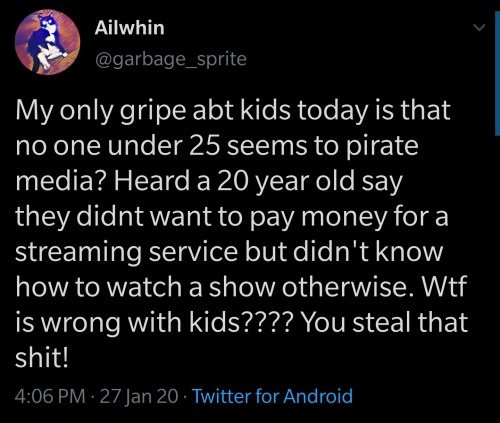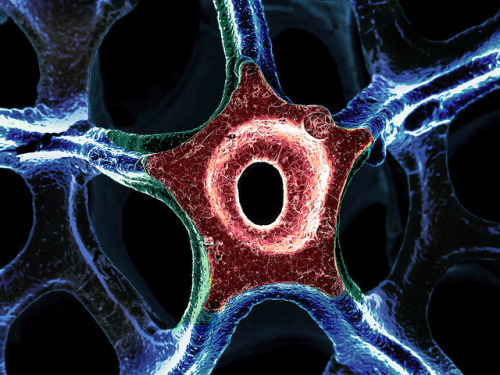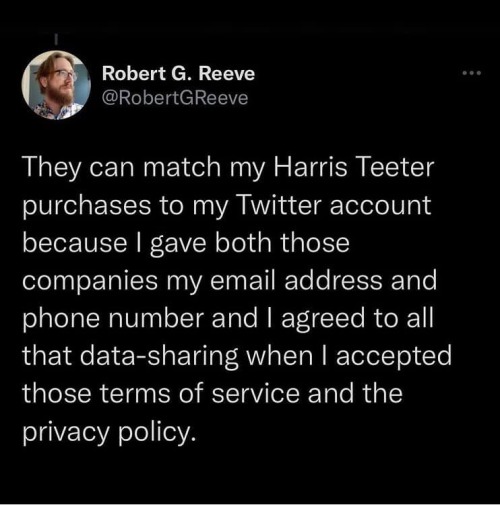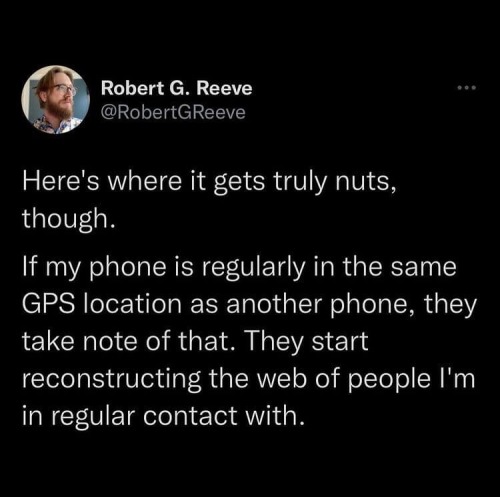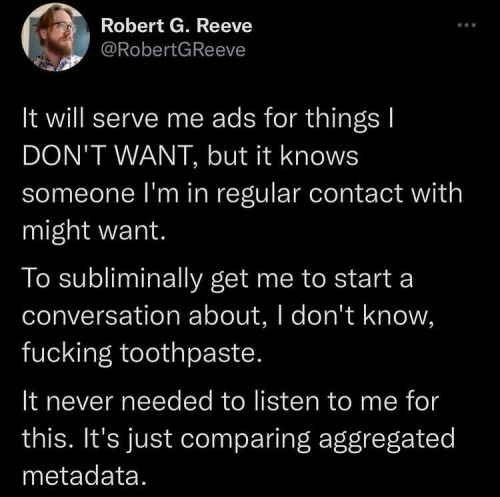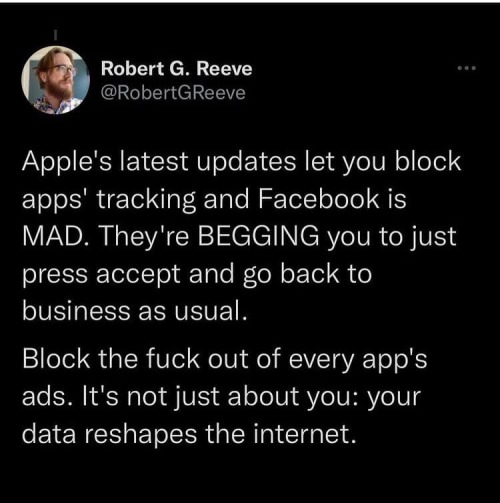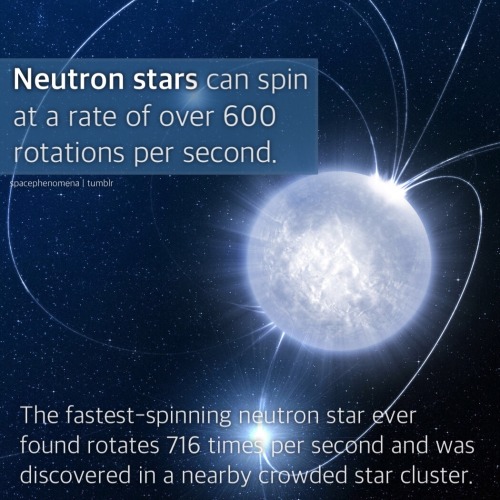#technology
There are a lot of really dog shit things in the world of tech that can be solved with a bit of time, some stubborn googling and maybe some special hardware and piracy is only the tip of the iceberg.
Printers are notorious for claiming they’re out of ink when they haven’t come close to the suggested number of prints, and their cartridges literally still have ink in them. So after a bit of googling I found out how to ‘reset’ a cartridges automatic stopping system (its literally 1 physical wheel on the cartridge that you gotta turn back). The only downside is that I don’t get a digital ink monitor, but since it told me it was empty when still half full, I don’t mind.
Like, you can just jiggle with some shit and solve one of the biggest money making scams in the post-industrial world and I don’t think people realise its that easy.
Or, like, repairing your own technology. A few months ago, I swapped out my sister’s laptop screen. Did it myself, I removed maybe 4 screws, no vital parts were exposed and it cost me $40. I even got a choice of matte or glossy.
My point is, any walls that capitalist technology presents you with will be a false one. And one already broken by a dedicated community of interesting people working hard for free to break down that wall.
kids these days will be all “be gay do crime” and dont even know how to watch a cartoon without paying for it smh
IN FAIRNESS
piracy was definitely leagues easier a decade or so ago when thepiratebay was functional, megaupload was still running, and YouTube and Google made only the most cursory attempts to block copyright content. like let’s not pretend that the internet hasn’t got a lot more corporatised in the past decade or so. piracy is still possible and you can and should do it but it’s a LOT harder to do safely and reliably than it was.
^thank u
Sorry, this is all wrong.
1) ThePirateBay is still functional. (It’s not the same pirate bay that it was back in the day, but let’s not get into Theseus’ ship territory. It’s still here and it still works, that’s all that matters.) There are plenty of torrent sites around, more than there were 10 years ago – although overall traffic has plummeted. Now as then, it’s a whack-a-mole game.
2) Why was it “leagues easier” a decade ago? Some countries, not all (not north America, for example), now mandate ISP blocking of torrent sites, but this new complication can be bypassed with one (1) step: a
3) It was safer before? Are you shitting me? Have you lot forgotten that the legal departments of MPAA and RIAA sued torrent sharers (not even uploaders) and asked for millions of dollars for damages? AND GOT THEM? (By which I mean they didn’t actually get millions since the people they sued didn’t have any, but said people were convicted and ruined and that was the goal in the first place. It was a deeply amoral and cynical scare tactic.) Well they stopped doing that at some point, and focused on hunting P2P and torrent sites. Runninga site is certainly less safe today. Using one, though? Depending on where you are, the ISP may be allowed to block you after repeated instances, and that’s it. You’re not getting in trouble with the law or into crippling debt. And either way there’s only a minuscule chance that any of this will come to pass, which becomes zero (0) with a VPN. (Safety of course depends on the country, and in some cases piracy is the least of your concerns. Let’s not get into that.)
4) Ten years ago there was no Sci-Hub, and Library Genesis was in its infancy. If today it’s harder to find PDFs on google, it is orders of magnitude easier and more reliable to find them elsewhere. People just have to unstick their minds from the notion that stuff is either on google or doesn’t exist at all. Geez.
5) P2P still exists. IRC (the sharing channels in particular, #bookz and the like) still exists. Torrenting functions like it always did. All these methods are exactly as easy to use as before, i.e. not necessarily a piece of cake, there’s a learning curve. But it’s the same learning curve it was 10 years ago.
6) So what have we lost? Only YouTube (meh, the film/tv quality was appalling anyway, and music is still there) and direct downloads (at least the permanent ones: there are plenty of them still around, but files expire and you need to keep track of what goes up when. So this goes beyond knowhow, it’s about internet communities. Let’s not get into that either, it’s a huge subject.) It’s a loss, sure, but I wouldn’t call it a terrible blow.
7) And in exchange for that loss, we got streaming sites. This is piracy, too, and it’s much much easier than torrents, and tons of people do it. Any “piracy has declined” narrative either implies that we’re excluding streaming from the discussion for some reason, or is flat out wrong. Ten years ago, grandpa couldn’t possibly torrent a film, and it’s debatable if he even knew how to open the file you helpfully sent him. Now, as long as someone has set up kodi or similar, grandpa can watch it on his tv and it just feels like cable.
8) On why torrents in particular have declined in recent years, see here. It’s a big subject and I didn’t cover all of it, but the main reason is that people had access to easier methods to get what they wanted (some legal and affordable, some illegal and free), so they didn’t need to learn how to torrent. Ergo, they never did. There’s more of course, and there’s definitely a cultural shift too, but that’s a very long story so let’s not get into it. The linked post also includes some thoughts on why torrents aren’t dead and doomed just yet, and ooh, I forgot a very important one: you can’t stream photoshop.
To summarise, internet piracy is NOT more difficult, unreliable, and unsafe today than it was 10 or 20 years ago. For reasons why people (young or otherwise) seem less versed in it, please look elsewhere. I have thoughts on that too, but this is already a very long post, so I’ll just leave you with the best kind of thought. I’ll leave you with a doubt:
ARE people less versed in piracy? Are they really? Or is it simply that 20 years ago, internet users were computer geeks by definition, whereas now everyone’s online? Perhaps the percentage of skilled pirates in the general population remains more or less the same, and the only thing that’s dropped is the percentage of skilled pirates to total internet users. I can’t be sure without statistical evidence, but it’s a possibility.
You can literally google “watch _____ free online” and find most movies but the third result just download Adblock or popup blocker and you’re golden it truly couldn’t be easier
I’ve been meaning to make a piracy masterpost for awhile and what better time than now?
Materpost: A curated Githup tutorial of links to more torrent sites, software, VPNs, uBlock origin filters, ect. Basically everything you could ever want starting out. Do be warned though it doesn’t appear to have been updated in awhile so a few of the links are dead.
GAMES:
- Vimm’s Roms:NES era->ps3 era roms and emulators to play them. Has user ratings on games. Cons: slow download speeds.
- NxBrew: Switch roms/game updates/dlc
- nsw2u: More switch roms. Check here if nxbrew doesn’t have the game you’re looking for.
- Hshop:3ds games/updates/dlc. Very well organized and sorted by console region. Bonus ability to generate QR codes to scan with homebrew to begin download directly on your console.
- Oldgamesdownload: Old 90’s-2000’s PC games and some gamecube games. Technically, all of the games here are abandon ware, meaning the original company/creator doesn’t sell nor make money from the games anymore period. If you’re into that.
- Fitgirl repacks: Heavily compressed PC games, and other various consoles. Small downloads and faster speeds for the size of the games. Somewhat limited game selection.
- Steam unlocked: Steam games with easy-to-use installers. Check here if fitgirl doesn’t have what you’re looking for.
- Steam Underground: A user forum for piracy support, usually about installing cracked games. Does have some scattered PC game downloads.
- Google doc of Skyrim SE creation club content.
- Amiibo life: Amiibo bins, can be loaded with some homebrew to load in games without any external source, or, if you buy writable NFC cards, you can make your own free amiibos.
Books:
- Library Genesis: a good all-in-one ebook finder. Has books, magazines, scientific papers, ect. Well organized and able to sort by Author, Genre, ect ect. Almost all books in .epub format
- Calibre: Not piracy but a free software for reading said .epub files, and other ebook formats. Good for sorting your books.
- Sci-Hub: Research papers, academic books, pdfs, ect. Helpful for collage students.
- IT ebook: eBooks about learning programming languages.
- audiobookbay: Audiobook downloads.
- Booksonic: Audiobook streaming.
- 5e.tools: Dnd player’s manual, guide, ect.
- Books on learning various languages.
- Mangadex: Manga, Doujinshi.
- Headspace sleep audio.
- Various books and manuals.
Streaming:
- ustvgo: Free streaming of live tv, has most US cable tv channels.
- tutturu: Spiritual successor to Rabbit, allows you to stream your screen with friends.
- Yes movies:Movies
- Kimcartoon: Cartoons/animated movies
- aniwatcher:Anime
- animedao:Anime
Computer software:
- getintopc:Wide selection of pc (mostly windows) software of all sorts, and different versions. Can personally vouch for the site, I’ve gotten Photoshop, Maya, and Sony Vegas from here over the years.
Other:
- the eye: An archive of old roms, OS systems, roms (non nintendo), comics, books, ect, ect. Cons: No search function and slightly hard to navigate.
- 1337x.to: Torrent site for movies, shows, games, comics, ect.
- ThePirateBay: The classic.
- Recorded broadway musicals. Verying quality.
Post link
“We’re allowing the present to conspire against the past in the name of the future.” Over at Tedium this week, I laid out a serious problem with planned obsolescence and preservation, which has caused serious long-term problems which will only worsen as technological changes lead to increasingly obsolete gadgets. Not everyone will agree with me on this, but it’s a debate worth having.
Post link
Asteroidea Electrica |ZEISS Microscopy
This is a false colored low magnification electron micrograph of free standing graphene foam. Graphene foam is made by growing a few layers of graphene on the surface of a porous metal foam skeleton using chemical vapour deposition technique. The metal foam skeleton is then removed by carefully dissolving it in an etching solution. Because of its unique properties, e.g. electrically conductive, highly porous, and lightweight, graphene foam has the potential to be used in numerous advanced applications including chemical sensing, energy storage, and ultra-lightweight structures. Submitted by Adrianus Indrat Aria.
Post link
[Image ID: a Twitter thread by Robert G Reeve that reads “I’m back from a week at my mom’s house and now I’m getting ads for her toothpaste brand, the brand I’ve been putting in my mouth for a week. We never talked about this brand or googled it or anything like that.
As a privacy tech worker, let me explain why this is happening.
First of all, your social media apps are not listening to you. This is a conspiracy theory. It’s been debunked over and over again.
But frankly they don’t need to because everything else you give them unthinkingly is way cheaper and way more powerful.
Your apps collect a ton of data from your phone. Your unique device ID. Your location. Your demographics. Weknowdis.
Data aggregators pay to pull in data from EVERYWHERE. When I use my discount card at the grocery store? Every purchase? That’s a dataset for sale.
They can match my Harris Teeter purchases to my Twitter account because I have both those companies my my email address and phone number and I agreed to all that data-sharing when I accepted those terms of service and the privacy policy.
Here’s where it gets truly nuts, though.
If my phone is regularly in the same GPS location as another phone, they take note of that. They start reconstructing the web of people I’m in regular contact with.
The advertisers can cross-reference my interests and browsing history and purchase history to those around me.
Family. Friends. Coworkers.
It will serve me ads for things I DON’T WANT, but it knows someone in regularly contact with me might want.
To subliminally get me to start a conversation about, I don’t know, fucking toothpaste.
It never needed to listen to me for this. It’s just comparing aggregated metadata.
So. They know my mom’s toothpaste. They know I was at my mom’s. They know I have Twitter. Now I get Twitter ads for mom’s toothpaste.
Your data isn’t just about you. It’s about how it can be used against every person you know, and people you don’t. To shape behavior unconsciously.
Apple’s latest updates let you block apps’ tracking and Facebook is MAD. They’re BEGGING you to just press accept and go back to business as usual.
Block the fuck out of every apps’ ads. It’s not just about you: your data reshapes the internet.”/ end ID]
I’m not sure why but this is scarier than knowing they can hear us
Post link

She changed the world of feminine care with the invention of the sanitary belt, the precursor to the self-adhesive maxi pad. She also has five patents covering various household items, including an improved version of the bathroom tissue holder. What else did she invent?
Born 1912, in Monroe, North Carolina, Kenner had a pretty positive childhood. Her father and maternal grandfather always encouraged Kenner and her sister’s creativity. The grandfather (unnamed) actually invented a tricolor train light. Her family’s support led to her thirst for discovery and invention later in life.
Kenner’s first invention was the sanitary belt (sanitary napkin) and later included a moisture-proof napkin pocket. This is considered by most to be the first form of modern menstruation protection, which led to the creation of the maxi pad in the 70’s. While maxi pads were self-adhesive, the sanitary belt incorporated an elastic belt that kept pads in place. Though she invented the device 30 years earlier, it wasn’t patented until 1956. This was due the taboos surrounding feminine hygiene and racial discrimination. The first company to even show interest in her invention rejected it after discovering Kenner was Black.
 (Sanitary Belt patent via USPTO)
(Sanitary Belt patent via USPTO)
In 1982, Kenner received a patent for an improved version of the bathroom tissue holder. Her design kept the loose end of the tissue roll away from the body and kept it in a more accessible position.
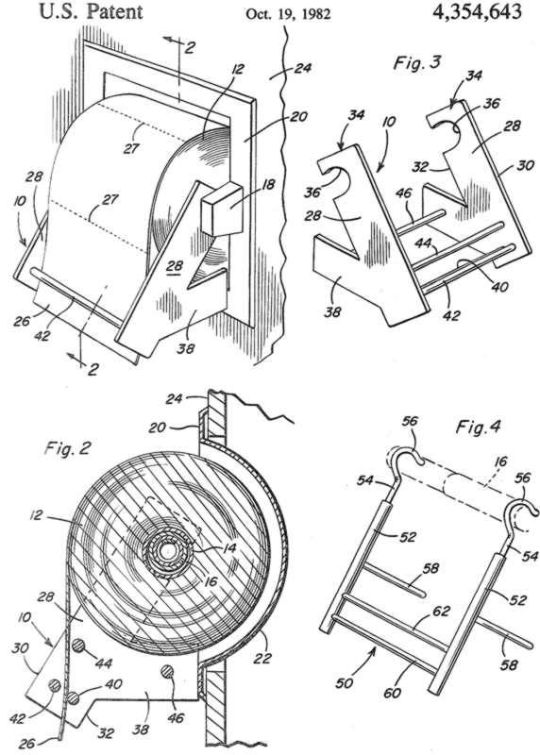 (Bathroom tissue holder via USPTO)
(Bathroom tissue holder via USPTO)
Other inventions by Kenner include a back washer mounted on shower walls and the carrier attachment for an invalid walker.
Even with her successes, Kenner went on to live a modest life. She worked as a professional floral arranger and managed her own small business in Washington, DC. She saw ways to improve people’s lives and claimed her work was not for the money. Kenner died January 13, 2006.
Interesting note—The famous young adult novel, “Are You There, God? It’s Me, Margaret,” references the “sanitary belt” before getting an update to “sanitary pad” in the 90’s.
Photo/Source:The Source
Source:Wikipedia
Source:For The Love of Women
Source:ThoughtCo
Source:Black America Web
Source:Google Patents

Meet the man responsible for helping to make the modern preservation of food and other products a reality for billions of people across the world today. While his research helped to combat spoilage and rancidity in food, he earned 59 U.S. patents too. Oh, and also improved the bacon-curing process (you’re welcome for that one). So, what else did he do?
Born 1894 in Elgin, Illinois, Hall first discovered an affinity for chemistry in high school. Being one of five Black students, he graduated top of his class in 1912, and attended Northwestern University. There, he studied pharmaceutical chemistry and received a B.S. in Science and later an M.S. in Science from the University of Chicago.
Though very qualified, Hall faced frequent discrimination while searching for employment. He eventually landed his first job at the Chicago Department of Health. During WWI, he served as assistant chief inspector of powder and high explosives in the Ordinance Department of the U.S. Army. After the war, Hall worked in various labs before becoming president and chemical director of a consulting laboratory, Chemical Products Corporation.
In 1929, Hall became chief chemist at Griffith Laboratories, where he would stay until retirement in 1959. It was there that many of his innovations would be developed in the field of food science. In the early 1920’s many companies struggled to find ways to cheaply and safely preserve food. While at Griffith, he would invent the “flash-drying” method for curing and preserving meats. This revolutionized the meat-curing industry.
Hall was the scientist to discover that certain spices in the pre-seasoning process food packers used actually deteriorated preservation. In response, he developed a method utilizing ethylene oxide and a vacuum chamber that sterilized the bacteria in the spices. His discovery opened the door to inventing various food products as well. This method is actually still utilized throughout the world by many industries on items like bandages, dressing, drugs, sutures, and cosmetics.
Hall also invented new uses of antioxidants to prevent the spoiling of fats and oils. One of his biggest legacies however? Improving the process of curing bacon. Not only did it shorten the curing time from weeks to hours, but enhanced the appearance and safety of the meat.
After his retirement, Hall was consultant to the Food and Agriculture Organization of the U.N. He died January 2nd, 1971, but his legacy lives on. He was inducted into the Inventors’ Hall of Fame in 2004.
Photo/Source:American Chemical Society
Source:Encyclopedia.com
Source:Wikipedia
Source:Webfiles.uci.edu
Source:Blackinventor.com

Considered the “father of 2G communications”, he pioneered and is responsible for the field of digital cellular communication and digital signal processing technology. This man fundamentally affected the way the modern cellphone works and how we talk to each other today. How did this man change our lives?
Born 1948, Nashville, Tennessee. Though coming from a large family and economically/socially challenged neighborhood, Russell overcame those odds to attend Tennessee State University where he earned a B.S. in electrical engineering in 1972. Interesting to note, Russell is the first African American to be hired directly from a “Historically Black University” by AT&T Bell Labs after earning his B.S. He would go on to earn a Master of Electrical Engineering from Stanford in 1973.
Continuing his work at Bell Labs, some of his greatest contributions involve his part in introducing the U.S. (and by extension, the world) to digital cellular technology. Until his involvement, AT&T’s Cellular Radio division was sort of bleeding money. The company had this technology, but the only practical consumer application at the time was for car phones. Russell suggested the idea of taking the phones out of the car and putting them on the people, thus creating truly mobile phones. Only problem was, there were more people than cars, and the specific spectrum these car phones were on wouldn’t be able to handle the bandwidth.
Fortunately for the team, Russell had already become the leading expert in digital signal processing. Russell came up with a few solutions to this technical problem; this included completely digitizing speech, which significantly reduced bandwidth by using certain modulation schemes and allowed 4 times the number of people on the same spectrum. The technology took approximately from 1984-1988 for Russell and Bell Labs to complete, and was the first digital cellular system in any place in the world. Hear it from the man himself:
Russell had a successful career at Bell Labs, climbing to leadership positions such as the Director of the AT&T Cellular Telecommunication Laboratory (Bell Labs), Vice President of Advanced Wireless Technology Laboratory (Bell Labs), Chief Technical Officer for the Network Wireless Systems Business Unit (Bell Labs), Chief Wireless Architect of AT&T, and Vice President of Advanced Communications Technologies for AT&T Laboratories. He also struck out on his own as current CEO of incNETWORKS (starting in 2000), one of the tech leaders in MicroLTE product platforms for 4G.
He also has over 100 patents under his belt over the course of his career, including some big ones:
- Advanced multi-network client device for wideband multimedia access to private and public wireless networks
- Broadband cable telephony network architecture IP ITN network architecture reference model
- Wireless communication base station
- Wireless terminal having digital radio processing with automatic communication system selection capability
- Wireless communication system having base units which extracts channel and setup information from nearby base units
- Mobile data telephone
- Base station for mobile radio telecommunications systems
Photo Source: Tennessee State University
Source:Wikipedia
Source:Vimeo
Source:Hudson Valley Press

Honored as a polymer chemistry pioneer, he patented a special coating for communications cable, making universal telephone service possible. Maintaining and creating modern telephone systems was easier to do and millions could be connected. He revolutionized the communications industry (while also making family nagging much easier across long distances). How did he do it?
Born 1911, Washington, D.C. As a child, Hawkins had a fascination with engineering, mechanical tinkering, and how things worked. He even built a radio from scratch just so he could listen to local baseball games. Graduating from high school, Hawkins attended Rensselaer Polytechnic Institute, where he earned a degree in chemical engineering. Hawkins would then earn a master’s in chemistry from the famous Howard University (1934), a doctorate from McGill University (1939), and a postdoctoral fellowship at Columbia University.
In 1942, Hawkins made history when he accepted a position at the prestigious AT&T Bell Laboratories, becoming the first African American to do so. Over the course of his 34-year career, he focused his specialty on polymers and plastics.
In 1956, along with his colleagues at Bell Labs, Hawkins patented a special polymer that could be used in cable insulation that made universal telephone service possible. The coating could withstand changes in temperatures and other environmental factors while reducing the cost of building and maintaining modern telephone systems across long distances. Prior to the the revolutionary discovery, lead coating was originally used to sheathe communications cable; this was toxic, heavy, and expensive. Others had tried to come up with alternative plastic coatings, but they were too brittle and couldn’t withstand environmental factors.
Hawkins’ design contained a chemical additive composed of carbon and antioxidants that prevented the polymer from breaking down in severe weather conditions, while being cheaper to produce. His discovery of the chemical stabilization required to create the polymer for the sheathe benefited millions and expanded telephone service across the world.
During the 60s, Hawkins was named head of Plastics Chemistry R&D and Assistant Director of the Chemical Research Laboratory. He later became Supervisor of Applied Research, and then in 1972, department head. Hawkins earned 18 U.S. patents and 129 foreign patents. His contributions also included to methods & techniques for recycling and reusing plastics. In 1975, Hawkins became the first Black engineer to be inducted into the National Academy of Engineering. He was also awarded the National Medal of Technology by George H.W. Bush in a White House ceremony before his death in 1992.
Photo Source: Don Bartletti, © 1992 Los Angeles Times
Source:Wikipedia
Source:MIT
Source:Invent Now
Source:CPNAS.org
Source:RPI.edu

As the first African-American to earn a Ph.D. for Nuclear Engineering in the U.S., he was behind a few notable breakthroughs in tech. This included inventing the “gamma-electrical cell”, which makes it possible to wirelessly receive and send audio signals through radio waves; this was a vital contribution to the future of the cellphone industry. And no, his work with gamma-radiation did not create a 9ft tall green rage monster.
Born 1934, Jackson, Mississippi. Sampson’s educational pedigree has a rather impressive list; he received a B.S. in Science from Purdue University (1956), an M.S. in Engineering from the University of California (1961), an M.S. in Nuclear Engineering from the University of Illinois Urbana-Champaign (1965), and a Ph.D. from the same university in 1967, being the first African-American to do so for that field of science.
From 1956-61, Sampson was a research chemical engineer for the U.S. Naval Weapons Center. He focused on the field of high energy solid propellants and case bonding materials for solid rocket motors. Sampson’s related patents during this time include a binder system for propellants and explosives and a cse bonding system for cast composite propellants.
However, Sampson’s arguably most notable invention came in 1971; he was co-awarded a patent for the “gamma-electrical cell”, a direct-conversion energy device that converts the energy generated from the radiation of high-energy gamma rays into electricity. What makes this device even more interesting was that the gamma-electrical cell would make it possible to wirelessly send and receive audio signals through radio waves, a vital contribution to the growth of the future cellphone industry.
Surprisingly enough, Sampson is also considered a very important writer and authority on the presence of Blacks in the film and entertainment industries throughout history; he has written and published 7 books on the subject.
Photo Source: African Events
Source:Complex
Source:Wikipedia
Source:About.com
Source:Purdue University
Technology:
What will futuristic technology and the world be like in the next twenty years? Technology continues to grow at an accelerated pace, changing our world today. Twenty years ago, no one would have guessed that everyone would have smartphones with the Internet. Soon, technologies will advance to the point where it will radically change who we are and how we interact with the world. Curious? Let’s look at the unknown.

Here are future technologies closer than you think.
Obtain a medical diagnosis through your Smartphone:
Currently, if something is wrong with a person, go to the clinic and see a doctor about it. In the course of our life, however, there will be applications with the ability to diagnose and prescribe medicines for our ailments.
We will have a much better understanding of dark matter and our universe:
Although we know that dark matter exists, we still have not solved all its mysteries yet. However, some believe that we will better understand their secrets in the next ten years. The understanding of dark matter will radically change physics and help us better understand how our universe works.
There will be human colonies on the moon:
We have been to the moon and discovered that it is not so interesting. Why would we want to colonize it in the world? Many scientists believe that colonizing the moon will help us achieve the next step of colonizing Mars.NASA thinks it is possible to colonize the moon by 2020.
Some may use jetpacks as a method of travel:
For a long time, jetpacks were just a dream, trapped in moviesandscience fiction novels. However, last year they developed a working jetpack. As developed technology, it is likely to be a source of travel for future generations.

